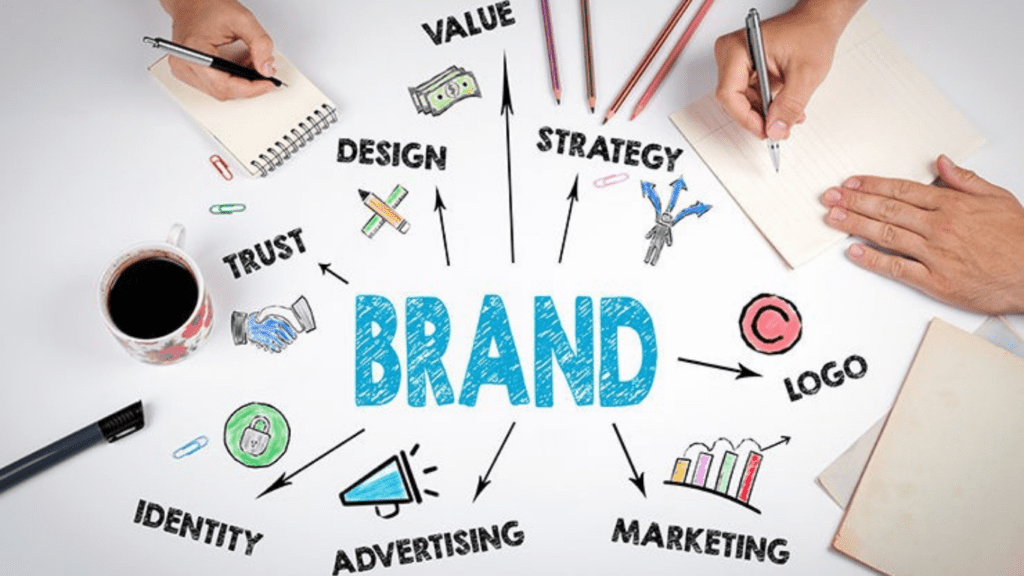Need Help? Call Us +91 87500 44914

BRANDING IS AN INVESTMENT NOT AN EXPENSE – Many business consider branding as an expense rather than investment.This perception often stems from the belief that branding is merely about logos, colors, and advertising. However, branding goes far beyond these superficial elements. It encompasses the overall experience a business provides to its customers, influencing perceptions, loyalty, and long-term growth DDMS helps you. Understand branding as an investment can have a great impact on business .
Understanding Branding: More Than Just a Logo
Branding is the art of shaping perceptions. It involves everything from a company’s visual identity to its messaging, values, and customer interactions. A strong brand creates recognition, trust, and loyalty among consumers. It makes a business different from competitors, builds credibility, and influences purchasing decisions. Successful branding makes sure that customers gets positive experiences and emotions with a brand which leads to repeated business and referrals. DDMS you to build the elements of branding. BRANDING IS AN INVESTMENT NOT AN EXPENSE
Brand Identity: includes logos, colors, typography, and overall design aesthetics.
Brand Voice and Messaging: The way any brand communicates with its audience Brand Values: The principles and mission that define a company.
Every interaction with the customer helps a business to grow.
How a business differentiates itself in the market.
How customers and the public perceive a brand.
1. Enhancing Customer Loyalty
Branding helps to create an emotional connection with customers. When people trust a brand, they are more likely to become repeat customers and brand advocates. Apple, for instance, has built a strong brand identity that fosters customer loyalty, making consumers willing to pay premium prices for its products.
2. Differentiating from Competitors
In a saturated market, having unique and a different brand helps a business stand out. It helps to know why a company is different and why customers should choose it over competitors. Companies like Tesla have used branding to position themselves as innovative and eco-friendly, attracting a dedicated customer base.
3. Increasing Business Value
A strong brand adds a great value to a business. Investors and stakeholders see well-branded companies as more profitable. Brands like Coca-Cola and Nike are worth billions not just because of their products but because of their brand equity.
4. Attracting and Retaining Talent
Branding is not just about customers it is also about people who just see our product. A company with a strong brand identity attracts top talent who align with its values and vision. Organizations like Google have successfully branded themselves as great places to work, helping them attract and retain skilled professionals.
5. Justifying Premium Pricing
A well known brand can command higher prices for its products or services. Consumers are ready to pay more for a brand they trust.
6. Reducing Marketing Costs Over Time
Branding only requires initial investment and it help to reduces long-term marketing expenses. A well known brand requires less effort to market, as existing customers spread word-of-mouth and organic reach increases. known brands like McDonald’s spend less on customer acquisition because their brand is already existing in the minds of consumers.
The Cost of Not Investing in Branding.
Many businesses dont the cost of poor branding. A weak brand can lead to confusion, lack of customer trust, and missed opportunities. Businesses who fail to invest in branding often struggle with:
Increased marketing and advertising costs to acquire new customers
Without proper branding, businesses risk becoming commodities, competing solely on price rather than value.
How DDMS will help you to Build a Strong Brand
1. Define Your Brand Strategy
Understand your business’s goal, values, and unique selling propositions (USPs). You should know your target audience and create a brand strategy that matches with their needs and expectations.
2. Develop a Consistent Visual Identity
Invest in professional design for logos, typography, and color schemes. Consistency in branding elements across all platforms (website, social media, packaging) is crucial.
3. Craft a Compelling Brand Story
People connect with stories. DDMS will help you to Develop a brand narrative who communicates your journey, mission, and why you do what you do. Authentic storytelling helps to builds trust and emotional connections.
4. Deliver an Exceptional Customer Experience
A brand is not just about visuals—it’s about how customers feel while interacting with your business. It helps brand for excellent customer service, seamless user experiences, and personalized engagement.
5. Leverage Social Media and Digital Marketing
Social media plays a vital role in branding. regularly communicate with your audience, share valuable content, and maintain a strong online presence.
6. Monitor and Evolve Your Brand
Branding is not a one-time effort; it’s an long process. Regularly monitor brand perception through customer feedback, market research, and analytics. Adapt to trends and changes in consumer behavior to stay relevant.
Conclusion
Branding is not an expense—it’s a investment which helps to get a long-term benefits. A well-crafted brand enhances customer loyalty, increases business value, differentiates from competitors, and justifies premium pricing. While the initial costs of branding may seem high, the long-term returns in customer trust, recognition, and profitability make it one of the most valuable investments a business can make. Companies that know this principle and invest in branding will get the rewards of sustained growth and market leadership. Instead of as”How much does branding cost?” businesses should ask, “How much will it cost us if we don’t invest in branding?”

